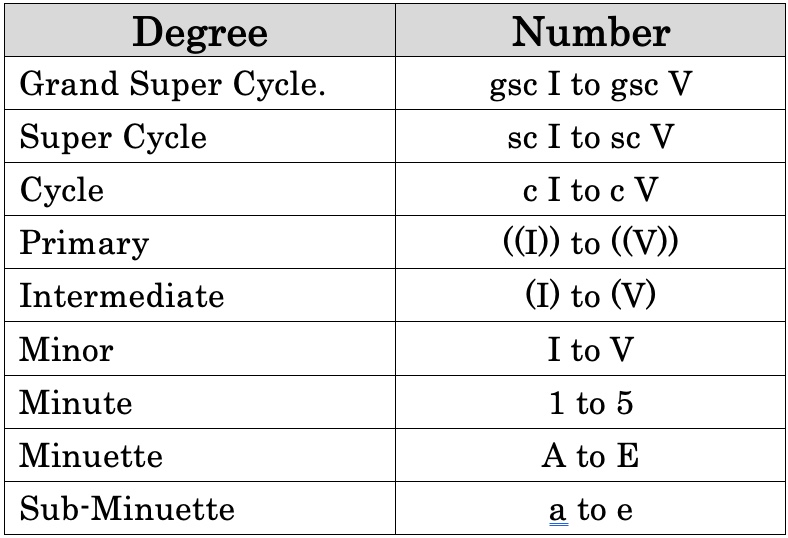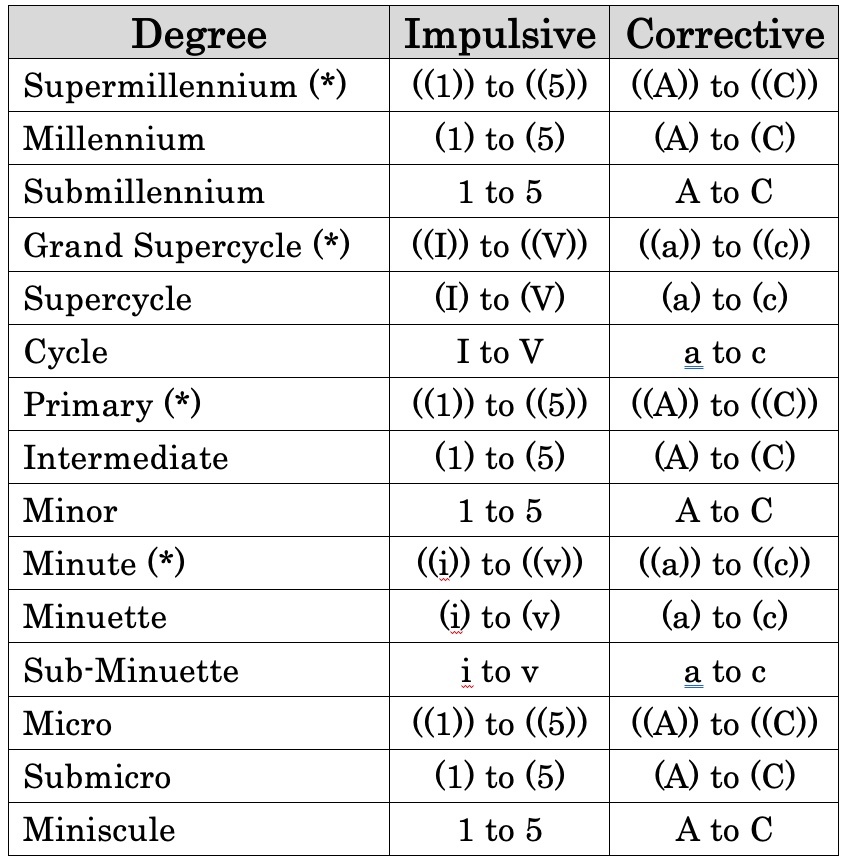In previous posts, we identified waves following the criteria commented in our post “Waves in Financial Markets.” This approach allows us to have a general comprehension of the market sequence. In this article, we will discuss the Elliott Wave terminology and labeling.
Terminology
Elliott in his treatise “The Wave Principle” developed a structure to identify movements as a complete sequence. Remember that when five waves are finished, a movement of greater degree is complete. The arrangement allows classifying waves from a higher to lower degree. The different degrees are as follow:
-
- Grand Super Cycle.
- Super Cycle.
- Cycle.
- Primary.
- Intermediate.
- Minor.
- Minute.
- Minuette.
- Sub-Minuette.
For example, a Cycle move has five Primary waves, and then, a Primary move has five Intermediate waves, and so on. Prechter and Frost, in their book “Elliott Wave Principle” added six new degrees to those defined by Elliott. So, the list of degrees is as follows:
-
- Super millennium.
- Millennium.
- Sub millennium.
- Grand Supercycle.
- Supercycle.
- Cycle.
- Primary.
- Minor.
- Minute.
- Minuette.
- Subminuette.
- Micro.
- Sub-micro.
- Miniscule.
Elliott in The Wave Principle tells us not to pay too much attention to the nomenclature and its identification. The purpose of the terminology is to ease the analysis process of the price movement.
Is probable that you feel a little uncomfortable with what degree to use. R. N. Elliott and A. Hamilton Bolton give us a clue about what grades are most common to use, these are Minor, Intermediate, and Primary.
Labelling
Labelling consists in the identification of each wave according to its degrees. Elliott In his first work, assigned the labels as follows.

Figure 1
Elliott in his book Nature’s Law (1946) re-defines the labelling depending on if it is an impulsive or a corrective wave. He defines the use of numbers for impulsive waves and letters for corrective waves. Below you can find a way to label the waves including the new degrees created by Prechter and Frost.
 Figure 2
Figure 2
(*) The original label has been adapted intentionally from circle to double parenthesis.
In Summary
- Primary for the weekly chart.
- Intermediate for the daily chart.
- Minor for the 4-hour chart.






[…] low at 0.68279, until January 28th, 2018, high at 0.81358. If we apply the concepts of labelling (read more) we could assign it an intermediate wave degree, which we label as (A), (B), (C), (D), and (E). […]